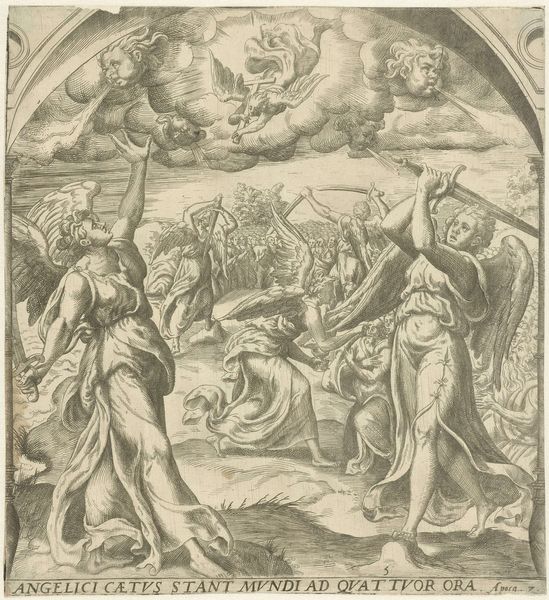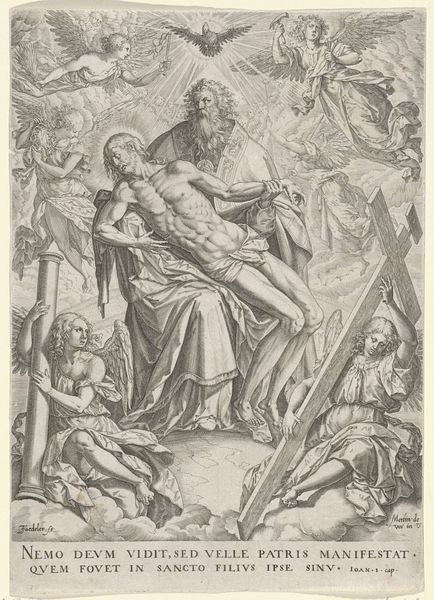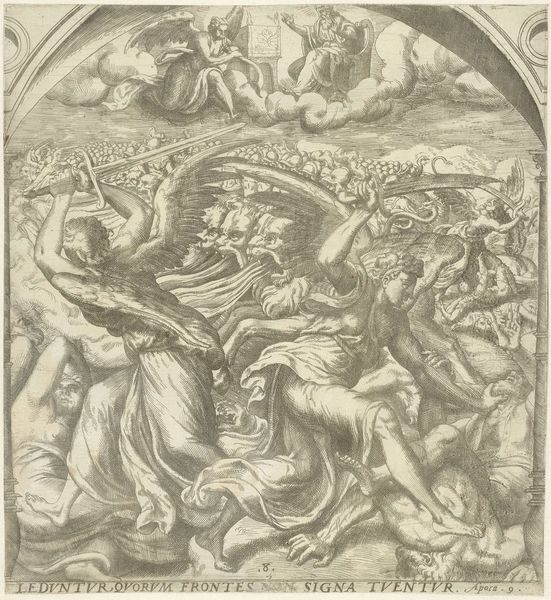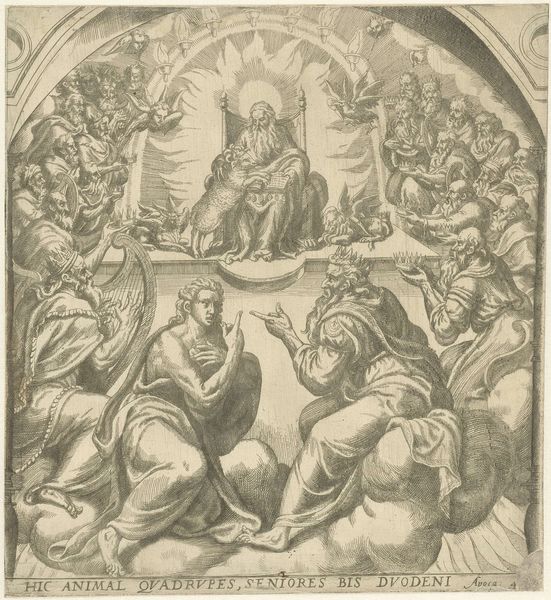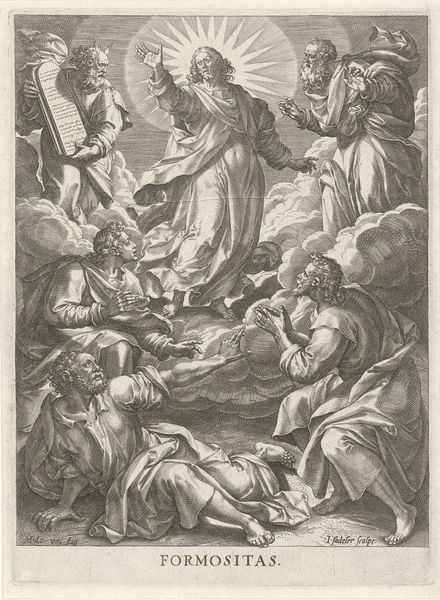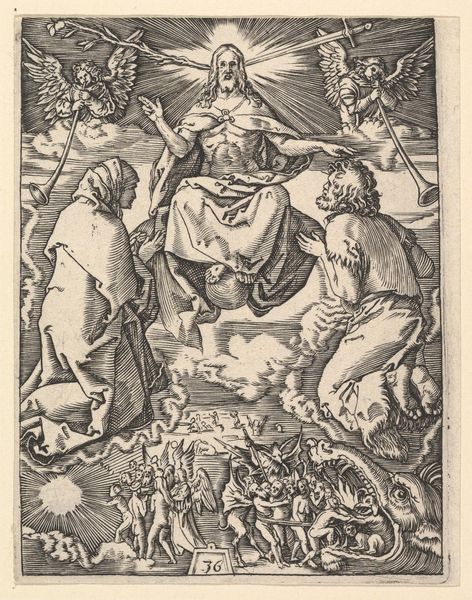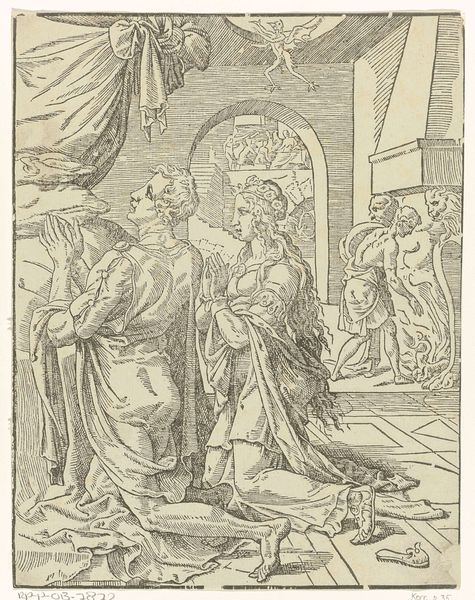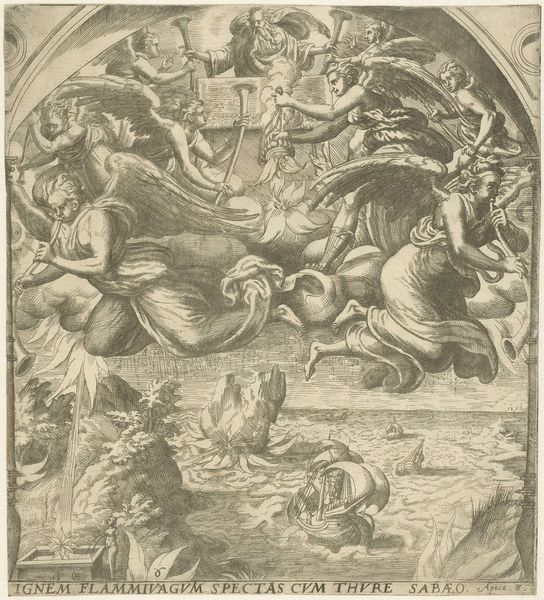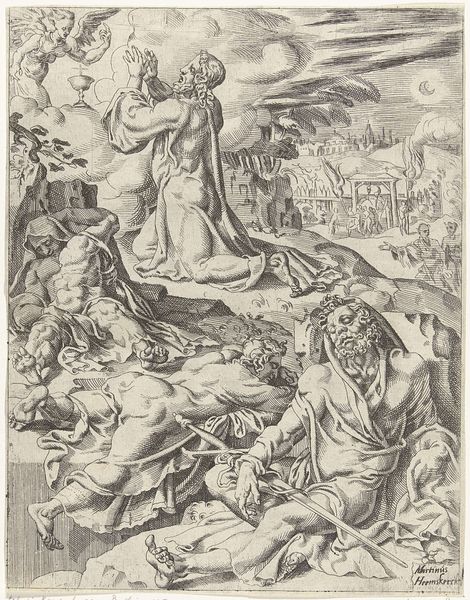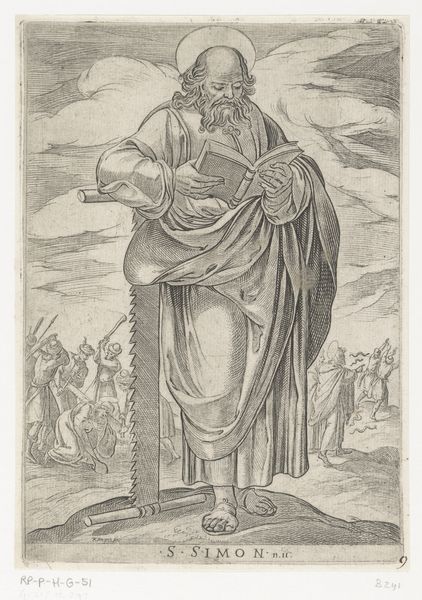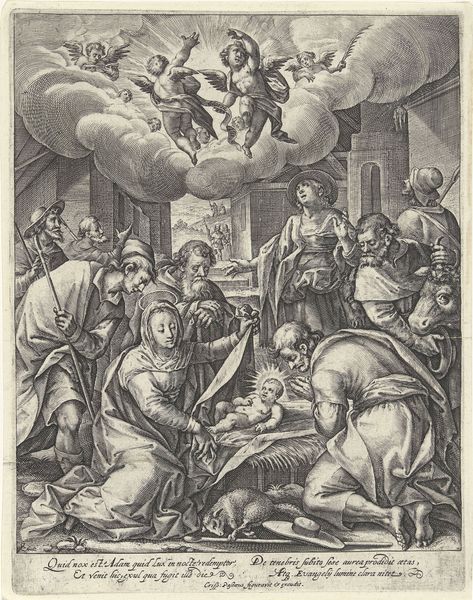
print, engraving
# print
#
figuration
#
11_renaissance
#
history-painting
#
engraving
Dimensions: height 268 mm, width 250 mm
Copyright: Rijks Museum: Open Domain
Curator: What a striking image! The drama practically leaps off the paper. Editor: It does have a certain intensity. It reminds me a bit of those theatrical Baroque pieces, all swirling action and heightened emotion, even though this piece predates that artistic period. Curator: Indeed! This is an engraving from around 1563 to 1574 entitled "Johannes voor de zoon van God," or "John before the Son of God," created by Gerard van Groeningen and housed right here at the Rijksmuseum. Note the symbolic elements surrounding the figures. Editor: I'm immediately drawn to the candelabras and that large sword bisecting the figure in the middle—how are we meant to understand this iconography? Is the sword a symbol of judgement? The candles representing insight or God's omnipresence? Curator: Well, context is key, isn't it? Religious art from this era uses symbolism to communicate specific theological concepts. The seven candlesticks, for instance, often represent the seven churches of Asia mentioned in the Book of Revelation. The sword suggests divine justice, God’s word penetrating all. Editor: Knowing that this piece comes out of the late Renaissance with burgeoning religious tensions does that not speak to broader anxieties? This almost feels like an allegorical cry for reformation amidst socio-political upheaval—an endorsement, even, of strict adherence to doctrine? Curator: Absolutely. This imagery played a crucial role in shaping religious and political opinions during that era. Artists like van Groeningen actively contributed to those conversations. Editor: It’s interesting how accessible prints like this one could spread these narratives to a much wider audience than, say, a fresco in a private chapel. It becomes a portable piece of propaganda. Curator: Precisely! Printmaking enabled mass distribution, furthering the circulation of ideas across societal boundaries. This artwork reveals how integral imagery was to early modern debates around faith and authority. Editor: Well, considering these themes around judgement, enlightenment, and reformation—seeing that made through today’s lenses helps me reflect upon our current socio-political state, raising fascinating parallels in our current times. Curator: It certainly provokes questions relevant even now, doesn’t it?
Comments
No comments
Be the first to comment and join the conversation on the ultimate creative platform.
